Sharing Our Identify and Keeping Warm
A new exhibition explores the form, function, and culture of Alaska Native parkas
By Dr. Nadia Jackinsky-Seth
Every time I see a sea otter pelt, I instinctively want to run my hands across it. The sea otter is arguably the warmest fur-bearing animal on our planet, one used historically in Alaskan communities to keep us warm. In the North, we are accustomed to the cold, the wind, the rain, the darkness. We know that to be comfortable and safe in this environment we need to dress for the weather and be prepared. Today we layer wool, Gore-Tex, and fleece to go out in the elements. We also sometimes rely on customary clothing such as fur-trimmed parkas to keep our bodies protected. Animals such as sea otter, seal, arctic fox, wolverine, beaver, reindeer, muskrat, mink, caribou, ground squirrel, eider duck, and many others share their skins so that we may be warm.
Ghhúunayúkata/To Keep Them Warm: The Alaska Native Parka, on view at the Museum of International Folk Art through April 7, 2024, elucidates and illustrates the ways in which parkas express individuality, group dynamics, and artistic aesthetics. The exhibition examines the continuum of Alaska Native parka-making with examples from the Yup’ik, Iñupiaq, Unangaxˆ, Dena’ina, Koyukon, and St. Lawrence Island Yupik cultures. Also included are Indigenous drawings, dolls, and parka-making tools, as well as historic photographs, to illustrate the contexts in which parkas are worn.
Parkas have been worn in the North for thousands of years. They can serve as symbols of identity and sovereignty; when wearing one, a person is immediately expressing a connection to this region. Historically, people could tell where someone was from based on the design of the parka and the materials used. In some communities, parka-makers use qupak, a decorative pattern used on trim work, to express family or community connections. Other design elements such as tassels, parka cut, and hood design communicate information about specific regional affiliations, gender, and status. When attending events such as the annual Alaska Federation of Natives Convention, a visitor can see the variety of parka designs and the cultural pride that accompanies wearing them.
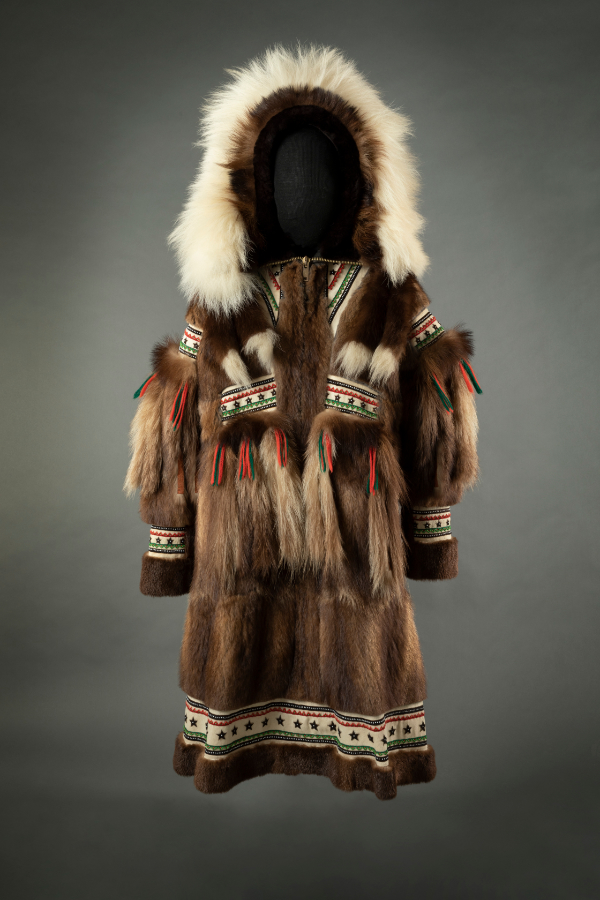
Esther Norton (Iñupiaq), Qusru aq (parka), 1985, Qikiqta ruk (Kotzebue), Alaska. Muskrat belly, calfskin, wolverine fur, beaver fur, wolf fur, cloth, beads. 57 ½ × 39 in. Anchorage Museum Collection, 1986.6.1. Photograph by Chris Arend.
Parkas can stand as symbols of resourcefulness. Although today the materials used to make a parka are often purchased, historically every part of the parka came from materials derived from nature. Iñupiaq designer Jackie Qatalina Schaeffer has shared that Alaska Native clothing “takes nature into art and is art inspired by nature.” This is a sentiment that has been expressed in Alaskan clothing for centuries, as garment-makers have always used byproducts from subsistence to create clothing to keep our families warm, but also to express who we are and where we come from through designs that reference the lands, waters, plants, and animals around us. In this way, a parka is linked to environmental knowledge and aesthetics that have been shared and passed on from generation to generation.
Making a parka is an act of love, an embodied practice that uses hands and heart. It is a process that requires care, patience, and time to make stitches even and straight. It requires specialized techniques such as fur-sewing, waterproof stitching, and pattern-making—even today, many parka-makers use individualized patterns to make their garments, sometimes using their hands as a measuring tool. It requires intimate knowledge of the materials that are used; for example, parka-makers know that the fur from a wolverine will not form ice crystals, and has thus long been the preferred material to trim hoods. They know that sinew stitches swell when moist, and so this technique remains in practice when designing garments that will be used in wet environments.
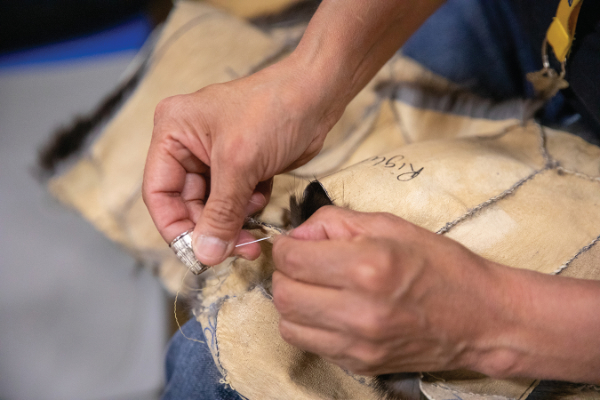
Jenny Irene Miller, Bobbie Gomez sewing, Qat ut: Northwest Arctic Trade Fair, Qikiqta ruk (Kotzebue), 2019.
Today, parka-makers incorporate contemporary materials in parkas such as velveteen, corduroy, and synthetic fabric. There is an interest in reviving some of the parka types that are no longer as commonly made, such as those made from bird skins, gut skins, fish skins, and squirrel skins.
In February 2023, I had a chance to visit with Merna Wharton (Yup’ik), who is one of a handful of women who still make parkas using ground squirrel hides. This type of parka was once common in Alutiiq/Sugpiaq and Yup’ik communities. “I make parkas to keep our traditions going,” Wharton said. “It’s fun to look at old models and to create traditional patterns based on them. Squirrel skins are my favorite to work with because the fur is short, it’s light, and it feels good to work with.” For the past few years, Wharton has been working with her mother to experiment with tanning squirrels and sewing the furs into parkas. She explained that the process is very slow. A parka made from ground squirrels requires about 100 hides, each of which needs to be cleaned, stretched, and dried before it is cut to fit a pattern and sewn together. The amount of time it takes to make a squirrel parka may be a factor as to why there are so few squirrel skin parka-makers today. Wharton hopes to be able to help others learn this craft, while also continuing to learn from historical parka patterns that she can access within museums and from family collections.
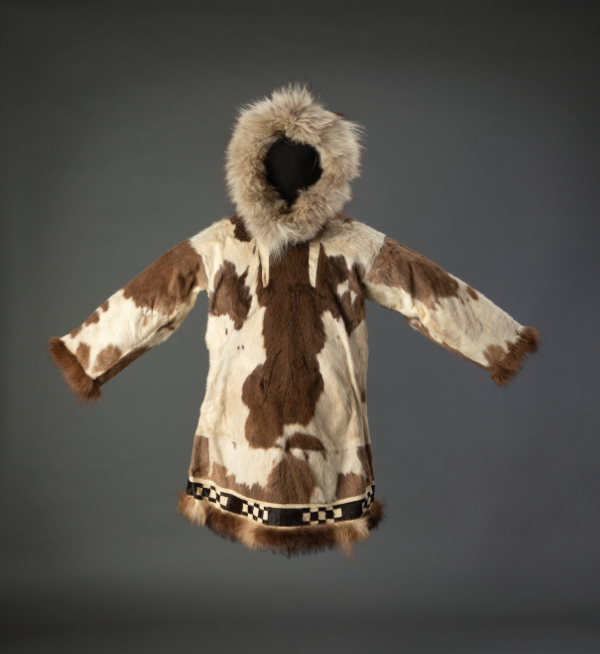
Historically, gut parkas were common throughout coastal Alaska as a windproof and waterproof garment. Today a few communities practice this craft using intestines from various sea mammals such as seal, sea lion, and beluga, as well as from bears. Some communities are reintroducing the craft through workshops. For example, in 2021, June Pardue (Alutiiq/Sugpiaq) led a two-week bear gut parka making project in Cordova, Alaska. Pardue explained that making the parka requires knowledge about parka pattern-making, as well as knowing how to prepare the intestines and how to use the sewing threads, which are sometimes made from grass or sinew. She shared that “building this gut parka was a historical event. I had never made one before, but as a child my mother sat me down and showed me how to sew gut and where to put the grass to make a waterproof stitch. When I was asked by [Chugachmiut, a nonprofit tribal consortium based in Anchorage,] if I would help make one, my mother’s hands flashed through my mind and I knew I could do it. Our ancestral memories are there; it’s in our DNA. The ladies I worked with in Cordova were yearning to be Sugpiaq gut-sewers, and it just came naturally.”
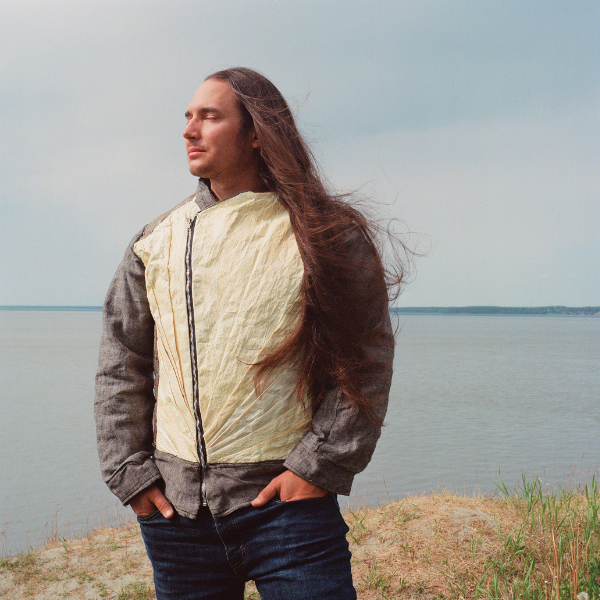
Joel Isaak (Dena’ina), Halibut Skin Moto Jacket, 2013, Soldotna, Alaska. Halibut skin, linen. Modeled by the artist. Photo © Brian Adams.
While historically bird skin parkas were made in communities from Kodiak Island and as far north as St. Lawrence Island, today only a few women are making them on St. Lawrence Island and on Nelson Island. The process to make a bird skin parka is time-consuming; it requires harvesting the birds, sometimes using bolas or nets, then tanning each skin and carefully sewing them together. Historically, bird skin parkas were made from the skins of crested auklets, cormorants, eiders, longtail ducks, puffin, and other birds. Parka-makers today experiment with the process of harvesting, tanning, and sewing these again today as a way to preserve traditional knowledge and values. Lydia Apatiki, who is from St. Lawrence Island, has written a bird skin parka-sewing curriculum to document the process so that others will be able to follow in her footsteps. In Tooksook Bay, anthropologist Ann Fienup-Riordan recently worked with local Elder Albertina Dull to document the process of making a bird skin parka using long-tailed duck and king eider skins. The efforts of these women may inspire others to turn to bird skins when starting new parka projects.
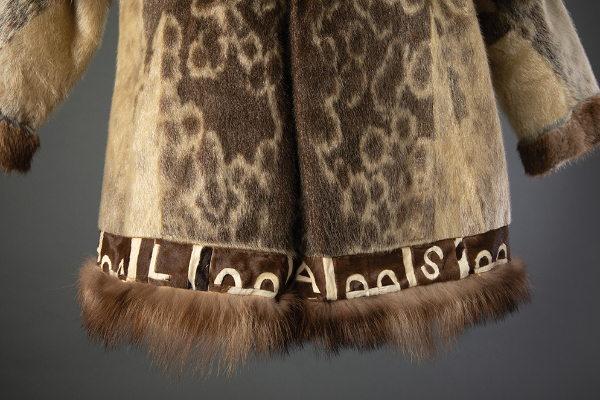
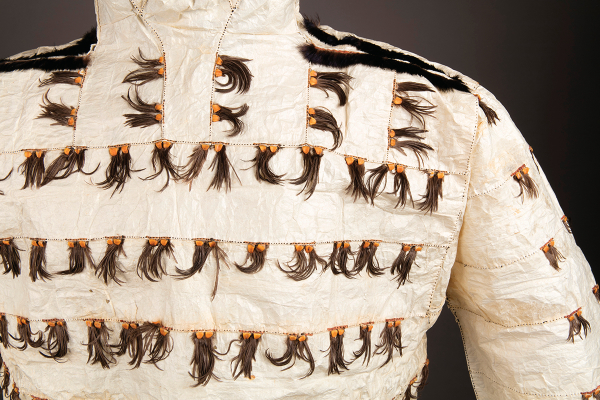
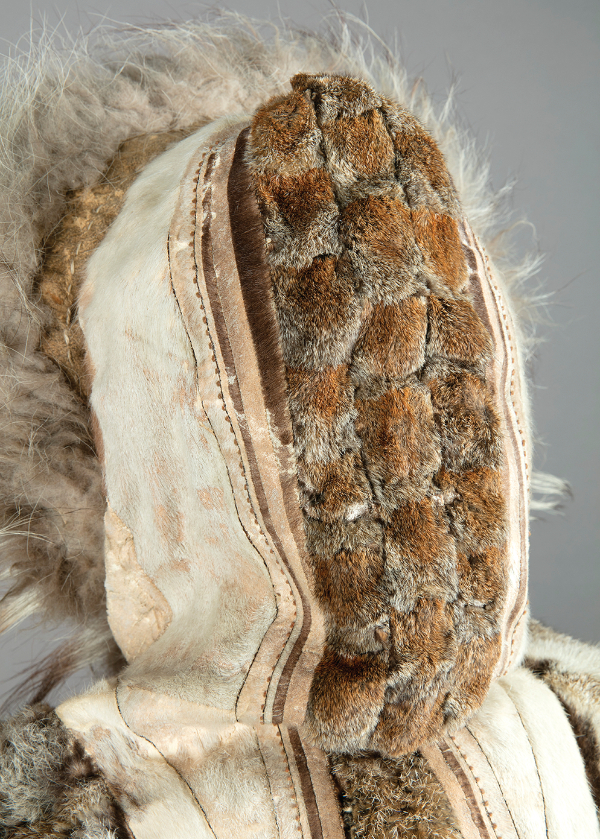
Top to bottom: St. Lawrence Island Yupik ancestor artist, Sanightaaq (ceremonial seal gut parka) (detail), early twentieth century, Sivuqaq (St. Lawrence Island), Alaska. Seal gut, auklet crests, seal fur, cormorant feathers, cotton thread, red ocher. 43 Å~ 54 in. Museum of International Folk Art, gift of Lloyd E. Cotsen, Neutrogena Corp., A.1995.93.986. Photograph by Addison Doty.
Middle: I.upiaq ancestor artist, Qusru aq (woman’s “fancy parka”) (detail), late nineteenth–early twentieth century. Arctic ground squirrel fur, wolf or wolverine fur, hide, wool felt. 59 Å~ 49 in. Museum of International Folk Art, IFAF Collection, gift of Louis Criss, FA.1974.42.1. Photograph by Addison Doty.
Right: I.upiaq or Yup’ik ancestral artist, Atigi or Atkuk (ring seal parka) (detail), 1947-48, Kuuyuk (Koyuk), Alaska. Ring seal fur, wolverine, calfskin, beaver fur, brass, cotton cloth. 49 3 ⁄16 Å~ 19 11⁄16 Å~ 1 15⁄16 in. Anchorage Museum Collection, gift of Neva and Walter Meyers, 2001.14.17. Photograph by Chris Arend.
With fish skins, a handful of people are using this material to construct parkas and other clothing examples, including Marlene Nielsen from Kokhanok and Joel Isaak from Kasilof. Many more makers use the skins for jewelry, doll-making, and boot and bag construction. Both Isaak and Nielsen have taught others their process for tanning the skins, and fish skin-processing workshops are becoming more common throughout Alaska. Like gut skins, fish skins are waterproof and strong, and they derive from an animal that is abundant and harvested in large numbers in Alaska. For artists like Nielsen and Isaak, using this material to construct clothing is a way of connecting with heritage. It is also a way of thinking about how to be resourceful with the animals that we continue to rely on for subsistence.
No matter what material is used, the deep knowledge that is needed to design and construct a parka makes it a meaning-rich garment that holds and passes on history and place-based connections. As Yup’ik scholar Marie Meade writes, a “parka itself will disappear from use and age, but the design will survive. … The idea is your paitaq, your heirloom, the inheritance you can touch, feel, and see. The parka will eventually fall apart, but the idea will never fall apart. It will be sustained. The recording of history, important information, stories, and family history will always be there.”
Dr. Nadia Jackinsky-Sethi is an Alutiiq art historian based in Kachemak Bay in Alaska. She is a program director at The CIRI Foundation, where she oversees the Journey to What Matters: Increased Alaska Native Art & Culture Program, which supports Alaska Native arts revitalization projects throughout Alaska. She is also a museum consultant and occasional instructor of Alaska Native art history.
This article and images are from El Palacio The Magazine of the Museum of New Mexico, Summer 2023.

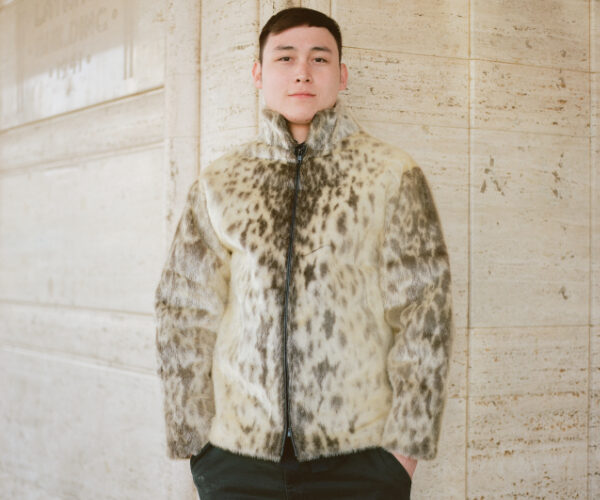

Connect